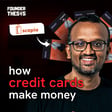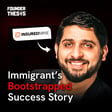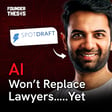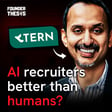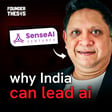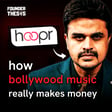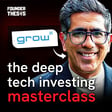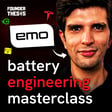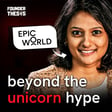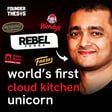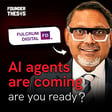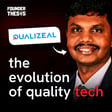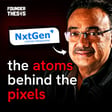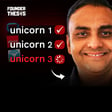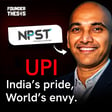Arman Sood's Entrepreneurial Journey
00:00:16
Speaker
We have all heard the stories of a bunch of kids launching a startup while still in college. And while these stories make for good headlines, we rarely get to hear about the long journey to scale that happened behind the scenes that made them an overnight success. A great example of this is the story of Sleepy Owl.
00:00:23
Speaker
Hi, I'm Arman. I'm the founder of Sleepy Owl Coffee.
00:00:34
Speaker
Arman Sood, the co-founder of Sleepy Owl, was constantly in search of a grand entrepreneurial idea while in college. And after a bunch of experiments during college, he finally ended up solving for the problem of good quality coffee at home. He saw the gap between a 300 rupee Starbucks coffee and a 5 rupee sachet coffee at home and started Sleepy Owl to make good quality coffee available at home to coffee lovers.
00:01:01
Speaker
Today, Sleepy Owl is among the leading D2C coffee brands in India. But thanks to the pandemic tailwinds, as more people are looking for good coffee at home. And they just raised $6.5 million from some top-notch VCs.
Brainstorming Business Ideas Post-College
00:01:17
Speaker
Here's Armaan narrating his rollercoaster journey to Akshay Dutt.
00:01:21
Speaker
So Ashwini landed up in Bombay. I had my job. We were staying together. And we went back to a sort of brainstorming process of, OK, what's the problem? What is it that we can fix? And at the same time, we understood very clearly that whatever it is that we want to fix,
00:01:40
Speaker
We have to be interested in it, enthusiastic about it, passionate about it, to actually be able to fix it and enjoy fixing it. So our way of coming up with that idea was that look at our personalities and what we enjoy doing. So we both love cooking, love eating, love drinking, ran a beer accessory business before that. So we knew that there's a great inclination towards FNB.
00:02:08
Speaker
or FNB consumer products, right? And even fitness. So whether it was, you know, we were looking at options like, you know, meal planning, you know, meal delivery at that time wasn't very big the way it is today. So we said, okay, you know, healthy food delivered, you know, healthy condiments was another idea that we were exploring.
00:02:29
Speaker
So while we were on this journey, and like I told you Ashwajith, someone who is very well-read on the internet,
Discovering Cold Brew as a Market Opportunity
00:02:35
Speaker
right? So I think his research kind of took him to coffee. And at that time we didn't realize it, but he was a black coffee drinker who brew coffee in a French press. And I was a person who sort of
00:02:53
Speaker
whether it's instant coffee or vending machine coffee, occasional milk based coffee at a cafe, you know, but I was never on the same page with him when it came to coffee, you know, but but he started researching coffee and then he was like, okay, there is
00:03:08
Speaker
It's an exciting space and we would actually work out of the Starbucks because I would go to office, he'd be at the Starbucks and I'd take a lunch break and go and meet him at Starbucks. That's where we were like, okay, the CCD near my office or the Starbucks where I would go to visit him.
00:03:25
Speaker
You'd average a bill of 250 rupees for a cup of coffee. Of course, you're also getting the work experience. But there was no comparison between if you were to look at the other options available for in-home consumption at that point in time, they're very limited.
00:03:43
Speaker
So I think when we identified this, you know, we dropped all the other ideas that we were working on, whether it was the meal planning or the, you know, and trust me when I say we're working on for most of those other ideas, we had logos, we had started working on a supply chain, you know,
00:04:02
Speaker
We kind of put everything on the back burner and we started going deeper into coffee.
Understanding Coffee and Cold Brew Potential
00:04:07
Speaker
On that research, we came across cold brew coffee. At that point in time, there wasn't a single company in India or a startup that was doing anything related to cold brew coffee.
00:04:19
Speaker
We identified that there were some young companies that already started buying coffee beans and roasting them and giving them to the Indian consumer. But we realized very early on that that's a chore or it requires effort. Yeah, you need a mocha part or a French press.
00:04:39
Speaker
Absolutely. And that is something that we, you know, will not be particularly, you know, it's not not there for our lifestyle. Right. Maybe, you know, at a later age or at a later point in time, I'd want to learn and get into that. But there's a large part of India that doesn't know. And that and educating the consumer about that would be extremely difficult. Right. And we didn't want to get down that path.
00:05:03
Speaker
That's when Ashwajith shared the idea with Ajay as well and said, OK, you know, what's the coffee scene like in New York and in the US? And, you know, very easily and very quickly Ajay validated that it is a space that is extremely exciting and that it's blowing up. And if things, you know, if things were to move east, India will also be at the brink of an explosion when it comes to
Learning Coffee Supply Chains at Chikmagalur
00:05:27
Speaker
So, that's when the three of us, you know, took a one-way ticket to Chik Mang Loor and actually started educating ourselves about coffee. Ajay came down to India. Yes, yes. He was back in India by then. He was exploring options with other startups, you know, in finance and, you know, other areas. But I think, you know, he was fairly excited about this as well. And, you know, for us, it was also an easy discussion in terms of
00:05:57
Speaker
Ashrit and I together were a disaster, proven disaster. So it would be great to have a third friend, confidant, somebody who brings a different skill set to the table altogether so that we don't repeat our mistake. And I think it was a fairly easy decision to make.
00:06:21
Speaker
If you like to hear stories of founders, then we have tons of great stories from entrepreneurs who have built billion-dollar businesses. Just search for the Founder Thesis podcast on any audio streaming app like Spotify, Ghana, Apple Podcasts, and subscribe to the show.
00:06:42
Speaker
So, when you took that one-way ticket to Chikmang load, did you quit your job and do that? I quit my job by then. I remember Ashrit and I had actually come for a small trip to Calcutta in December to announce to my parents that, you know, so Ajay had already quit. Ashrit had already quit. I was the only one left to quit my job, right?
00:06:59
Speaker
so it was in december that i told my parents that listen we have an idea you know it's it's cold blue coffee this is what it is i had a sort of mock mock you know i wouldn't even call it a business plan it was just a presentation with you know what this is and at that time idea was that we would set up a
00:07:15
Speaker
a bicycle cart that sells cold brew and we'll put it up in high street locations. But yeah, at that time, you know, like I said, you know, we are not, you know, we didn't have any background in FNB or FMCG or coffee for that matter, right? So the idea to go to Chik Mangur was to understand the supply chain of what would be our most important raw material, right? Without which there is no, there was no business to be had, right? This was like the Alibaba phase.
00:07:42
Speaker
Absolutely. So we ended up there. We were, you know, we acknowledged to ourselves and to the people who were meeting that we know nothing and that we would like to learn, you know. And I think that that's very important because if you pretend to know it all, it doesn't get you anywhere. Right. So we were clear about the fact that, you know,
00:08:01
Speaker
And armed with that, we met a few very, very interesting people who took out a pen and a paper and they drew for us every facet of the coffee supply chain and how it works and so on and so forth. Whether or not we buy from them or not was secondary, but they taught us. And of course, most conversations which ended with, we need five kgs of coffee or 10 kgs of coffee. We're like, what's wrong with you guys?
00:08:30
Speaker
Why is that like this is too small a quantity for them? Yeah, I mean it's it's you know, yeah, it is it's too small a quantity. And what did you learn about how coffee supply chain works? At that stage, we weren't aware of coffee being a green color bean, or let's say it even starts with a coffee cherry that is actually harvested. And then there are certain processes to take it to the green coffee bean level.
00:08:49
Speaker
From that, it's roasted, and each roast is different, and then it's ground. There are different, you know, a gazillion different grind sizes, and then how it's packed, how it's stored, what time of the year you have to source it, how you book your thing, how different coffees grown in different plantations could give you different tastes, you know. So while we were parallelly researching on the internet, it was amazing to hear it from the horse's mouth as well, right? So, you know,
00:09:15
Speaker
So all of this, we learned all of this, you know, at a more deeper level than just reading about it online. And for cold brew, what do you need? Like, what kind of grind, what kind of roast? When we went to the supplier to announce to them that, right? So we were actually, you know, researching online and going on Reddit.
00:09:35
Speaker
and on reddit we actually found a lot of cold brew coffee communities and enthusiasts right that were actually distilling the tips of how to make the world's best cold brew right and we also wrote to a couple of startups are asking them for you know their opinion their thoughts and you know you know
00:09:52
Speaker
And we got that information from them as well because people were very open to sharing. So for cold brew coffee, you essentially need 100% Arabica coffee. That is coarse ground. Not fine, not medium, but coarse ground. And that coffee is added to water in a certain ratio. You can play around with that. And then it has to be filtered after you brew it overnight. And you don't use hot water with it. You do it through cold water.
00:10:21
Speaker
You use room temperature or cold water, right? So we need to understand that we needed great coffee. What are the types here? So there are two main types, Arabica and Robusta. Arabica is a variety that is grown at a much higher altitude. It is more susceptible to pests, which is why it's difficult to grow. It's considered more premium in quality and has a much better taste. What do you mean better taste? Like less bitter or what?
00:10:45
Speaker
Yes, Arabica is less bitter and in Arabica you usually get more notes of the origin of the coffee compared to Robusta. In fact, Robusta is much cheaper, hence also considered inferior. And it's much easier to grow and therefore grow more.
00:11:04
Speaker
So yeah, so it was 100% arabica is what we needed. It needed to be coarse ground because a coarse ground coffee extracts slowly, right? And the whole purpose of cold brewing is to brew it slowly with cold water, not quickly with hot water.
00:11:21
Speaker
You needed very good water because coffee is ultimately 95% water, right? So for us, the secret sauce there was, you know, bisslery. And then you need to be able to filter the coffee grounds from the decoction and that filter could
Launching the Business and Validating the Product
00:11:37
Speaker
be done with stainless steel mesh, it could be done with paper, it could be done with cloth.
00:11:43
Speaker
So there are multiple ways to do it. So we spent a lot of time trying to figure out what is the best way to filter. And we finally finalized on a unbleached muslin cloth. So we actually went to a fabric shop, got the fabric, got them to design it in the size and shape of our bucket. And we started making multiple, and this is after we came back from Chick Manglur when we got our first couple of kgs of samples.
00:12:10
Speaker
And every time we encountered struggles or difficulties, you'd go back to Reddit or you'd send emails to the supportive global community of entrepreneurs who are happy to share. We managed to crack a recipe that we thought tasted great. I don't think there was anyone other than the three of us who said, okay, does it taste good or not? But we tasted enough to know that this is good and this is not.
00:12:36
Speaker
And with that, we decided that we're ready to launch. And this was in your Bombay flat only that you were using? By then, we were back in Delhi, in Dwarka, in Ashwajith. They have a house in Dwarka, which was empty. And we used that as our factory and office, and then we were living as well. So all these experiments happened there. And so you had this big plastic buckets in which you were doing the brewing?
00:13:03
Speaker
Yes. So this was around Jan and Feb, and we'd given ourselves an artificial deadline that by 15th March, we want to launch our business. The more time we spend, we don't put deadlines to it. We want them to do it. And 15th March, Jindal was having its annual sports fest.
00:13:20
Speaker
So we managed to book ourselves a free stall to set up a stall and serve coffee. So we said by 15th, we should have everything up and running. So we got our branding, our design, our event cart, which will be our station to make it.
00:13:36
Speaker
Yeah, you know, here comes Tom. On 15th March, we were at Jindal. We set up a stall. We had bought one litre glass bottles in which we filled this black liquid, essentially. So we went back and we were serving only three drinks for those three days. So a standard black cold brew, which we call the smooth black cold brew, because it's very smooth. And iced coffee, which is a cold brew plus milk. And a Vietnamese coffee, which is cold brew plus condensed milk.
00:14:03
Speaker
Just three drinks. And these were sugar free. I think typically cold brew is had without sugar, right? Black is without sugar. For the iced coffee, which is cold brew plus milk, we gave the option to add sugar syrup. And for the third one was Vietnamese coffee. There's sugars in the condensed milk.
00:14:21
Speaker
Right. And you were giving this free or you were selling? You were selling it. So it was, I think, $150, $170, $200, the price points, and big glasses, branded glasses with, you know, plastic glasses with a sticker, because you couldn't print on glasses. So, you know, we filled all the bottles of cold brew in Dvaraka. We bought a big icebox from Meel Kamal. You know, we organized a bar of hala in Sonipath to come. Everything that, you know, needed to put this together. And
00:14:51
Speaker
Yeah, you know, I mean, it was our university, it was our friends, it was, you know, and, you know, we managed to sell enough of it and people actually enjoyed even the black coal group, you know. So that gave us the validation that, OK, this is this is something, you know, and like this is exciting and we
Pivot to Direct Online Sales and Packaging Innovation
00:15:09
Speaker
can do it, you know. And I think one of the first ideas at that point in time would be for us was let's do B2B, you know,
00:15:18
Speaker
let's take this one liter cold brew and go and give it to restaurants and add sleepy owl cold brew on their menus as an add-on beverage. So we went and we had about three or four restaurants who added us on. But the first restaurant that added us on, we were just one of the items on their extended beverage menu. And 30 days, which is the shelf life of the product, went by and we'd sold one liter out of the six.
00:15:48
Speaker
that we decided it was the M.O.Q. to give any restaurant, you know. And it just didn't move, you know. And this is early April, where we said, listen, this is not going to work, you know. Mid-April, actually. Right after March, university event, wasn't one month, you're like, this is not going to work, because it's too long-drawn a process, and no one will, you know, get educated or learn about, you know, sleepy owl.
00:16:13
Speaker
There's no discovery happening. And, you know, we said we have to pivot. We can't do this. This is not going to work. We have to sell online and we have to sell it to the consumers directly who can buy from us and we'll deliver it to them. But actually transporting and shipping glass and one liter bottle of glass was not possible. So we spoke to, you know, friends, family, looked at alternative packaging options.
00:16:39
Speaker
And nothing seemed likely, nothing seemed doable. But because we had, let's say, expertise importing from China, and we were researching different possible packaging options, we came across this solution called a bag-in-box solution.
00:16:54
Speaker
Bag-in-box is how usually wine is packaged in the US. It's one of the formats common for wine packaging where you have a plastic bag with a tap and you put it in a box and you pull out the tap and you can dispense liquid. We said, oh, this is great. We found a supplier in China, ordered 1,000 1.5 liter packets, found a box manufacturer in West Delhi who designed the box for us.
00:17:22
Speaker
you know, gave ourselves another artificial deadline. By mid-June, we should launch this on our website. So between April, May and June, you know, the China piece, the India piece, all of it was put together. And on 14th June 2016 was when our e-commerce website went live with one SKU, which was a 1.5-litre box, right? And we did the same thing that we did the last time, which is simple black cold brew, you know, ready to drink black cold brew.
00:17:52
Speaker
And yeah, we spammed everyone in the world that we knew. And, you know, we started got the ball rolling. Did you do the whole like, you know, writing to newspapers, magazines? Not as much newspapers and magazines, but yeah, on loud was the stage of online blogs and, you know, discovery platforms like Little Black Books, so Delhi, so on and so forth. Right. And, you know,
00:18:16
Speaker
It picked up and we knew in our heads that if we can sell a thousand units, which is what we'd ordered, we are on to something. And that sold pretty quickly. You're still doing this at your home only, the manufacturing?
00:18:33
Speaker
Yes, absolutely, at home. So manufacturing, packing, getting it ready for Korea pickups. If Korea partners did not show up at the door, we would drive around NCR, delivering it ourselves. Yeah, so it was, you know, phenomenally. You'll focus the launch on NCR.
00:18:52
Speaker
because it's a 1.5 litre box, which essentially for Korea comes in the 2 kg bracket. It also requires not constant refrigeration, but if you're querying it to any other city, it takes three to four days of being outside the fridge and the coffee gets sour. So we focused on Delhi NCR only. And we were doing it by courier, even within Delhi NCR. But within five months, four months of doing this, we said that, listen, you know,
00:19:19
Speaker
We have to hire a delivery boy on a bike who can deliver it faster and keep it fresher. And Korea is not the way. And if we are hiring a delivery boy and one person for production, right, to do the production side of it, if you have these two employees, we have to move out of the house. We can't continue in the house. And we were in Dwarka, which is not very centrally located. So two of the restaurants that we were supplying to were actually in a place called Shapurjat in Delhi.
00:19:46
Speaker
So because we would go there to deliver to them ourselves, we discovered the neighborhood and we actually took up our first office space there in Chapurjak. And as crazy as it is five years on today, we are still in a different location in Chapurjak where our office is. So while Ashrit and Ajay were living in Dwarka for a significant period of time, I actually moved to the building beside our office because
00:20:14
Speaker
There was no other way to couldn't do a two-hour commute. By then, our roles were defined. Ajay is looking at finance and investor relations and team building and strategy. You started doing fundraise around that time? No. We just divided our roles. Anything finance, business development, team building, investor relations will be Ajay.
00:20:37
Speaker
Anything photography, website, e-commerce, design, social media, and supply chain, operations, packaging, warehousing will all be me. That's how we divided our roles. The three of us, along with these two employees, we kick-started. The next couple of hires were riders. As the business grew, we had to go from one rider to two to three.
00:21:05
Speaker
That realization also was more like suddenly, orders started picking up and I would start delivering them myself to maintain our delivery tat. Ajay saw me doing it for two or three days and he's like, listen, this is not the way to do business because if you deliver, your time is more valuable than, let's say, the riders for delivery, right? I mean, that's what they do, this is what you do.
Scaling Operations and Securing Investment
00:21:31
Speaker
So he's like, he set a rule saying that Arman will not deliver.
00:21:35
Speaker
And now I had to figure out how to hire the next one or two riders to make sure that the team is built, and we continue to optimize for that. So which month did you move to Shopuljat? So June, July, we launched. I think October, November, we moved to Shopuljat. March, which is the next summer, so we had a terrible winter. December, Jan, February was terrible. So by February, March, we started Instagram and Facebook advertising, right? So we started spending money on acquisition.
00:22:03
Speaker
And that's what it helped us take off a little bit. And that's when March was when I suddenly was like, OK, we need riders. We need our team to fulfill this.
00:22:14
Speaker
How much were you doing monthly like by that time? 1, 1.5 to, you know, so the launch on June, July, August was upwards of two. And then September, October, November, December, Jan Feb was like bordering between one and two. By March, we were, you know, up to like three, four. And, you know, in December, we actually met an investment banker.
00:22:40
Speaker
Who we said, listen, can you take our mandate and pitch sleepy out to investors? And he's like, yeah, you guys are at one lakh per month. I can't pitch you to anybody. And he gave us an arbitrary number. He said, you reach 10 per month and I'll take your mandate and introduce you to investors. So we said, OK, we have to do 10 and we have to do 10 by June 17.
00:23:03
Speaker
So March, April, May, June, we were very, very, very aggressive. And we were at 10 on June 17, just within Delhi NCR. We activated a few retail stores, which is, you know, some, we see the good thing is we have online data, right? We knew where our customers in Delhi were. So armed with that data, we said, okay, horse cars, defense colony, you know, Galleria, Gurgaon, you know, so on and so forth. So instead of going
00:23:30
Speaker
We went to the modern bazaars of the world but it wasn't very easy to go into a modern bazaar etc. So we first targeted independent stores. So we managed to actually list our product in about 30 to 40 single shop stores. And sales was done ourselves. Ajay and I took the responsibility for offline sales. Ashuji took the responsibility for online sales.
00:23:53
Speaker
and offline was categorized as modern trade, general trade stores and restaurants and cafes because our restaurant cafe, as much as we thought it won't work, it picked up as well. So we were effectively on the channel so that number 10 I'm talking about was a mix of online, retail, B2B, all three together. Which had the lion's share in this? Online, online, online.
00:24:15
Speaker
And yeah, so you know, we went back to this gentleman and he said, yeah, I'll take your mandate. And he started introducing us to a lot of folks. We were also fortunate that in between 1617, between June to June, we had a lot of inbound interest from investors as well.
00:24:34
Speaker
because it was a very, very new category. The brand presented itself well to the world and the product was delicious. I don't say that with any arrogance, I say that with pride because it was very tasty. It was something we developed that was tasty and people liked it.
00:24:52
Speaker
So, you know, naturally, word got around, right? And this is something Ashwari that always told me, said, that man, coffee is something that if people like it, it is, you will really talk about it to your peers, friends or group, you know, so he's like, it'll market itself.
00:25:11
Speaker
Yeah, it's something people are passionate about. So yeah, we started by I think June, July, we started our fundraising process and meeting people. And we actually closed our first round of funding from DSG consumer partners in around February 18. It was a good six month process where we had to maintain those numbers, continue to grow, continue to perform.
00:25:37
Speaker
And I think we decided on DSG, led by Deepak Shaddad, Shaddad Puri. DSG, of course, is renowned for D2C sector. Absolutely. D2C, food and beverage, especially. And they backed Raw Pressery, Epigamia, Viba, Sula. And for us, it was a no-brainer to welcome them into the Sleepy Owl family. And I think it was one of the better decisions we made because they've been
00:26:06
Speaker
Fantastic partners for the last three and a half, four years and had our back and continued to do so. How much did you raise, like that first raise in
Expanding Product Line with Cold Brew and DIY Kits
00:26:15
Speaker
Feb 18th? Three and a half crores. So that capital was not meant only to scale our existing product. So we had grand plans, we had grand ideas. We wanted to get into the ready to drink space.
00:26:30
Speaker
which was dominated by Nestle and Starbucks on the retail shelf. That was where we wanted to go. The funding was not to only scale our current business, it was also to invest in the brand introducing its ready-to-drink offerings and whatever else that the three of us could dream about.
00:26:52
Speaker
And you know, so the moment the funding came, we started working on the development of the RTD ready to drink. So like a ready, ready to drink off the shelf product. So we were India's first and our property, even now one of India's only ready to drink cold brew coffees on the retail shelf. Right.
00:27:10
Speaker
And it was a phenomenal experience figuring out how to crack that product, make sure it's preservative free, make sure it's low in sugar, make sure that cold brew is how it's made, not with powder or skim milk powder or coffee powder. It's made with real milk, real coffee, low sugar. And in 2019, I think we launched the ready to drink in the market. This is like in a bottle or in a Tetra pack? It's in a bottle. It's in a glass bottle.
00:27:40
Speaker
We worked with a co-packer for the production of this. We didn't set up our own facility or plant for this. That's how we decided that that would be the next big category to do. Simultaneously, our cold brew, which was only in NCR, we had to find a way to scale it to pan India and reach out to new consumers. We went back to Fundamentals, which is what is a cold brew? It's great quality coffee that is filtered by adding cold water.
00:28:09
Speaker
So we actually took coffee that was put in a big filter. So each filter bag which is big has about 45 to 50 grams of coffee. A person adds half a litre of water, brews it overnight and can make a cup anywhere. So essentially then what we were selling was
00:28:27
Speaker
dry ground coffee. But our innovation was to put that ground coffee in a pre-packed filter bag. We were India's first brand to do that. Today, we have a lot more fellow brands that are doing the same product. And that launched before they're ready to drink.
00:28:44
Speaker
So mid-18 to now it's been three years of that product and I think we spent the last five years educating consumers and our growth has been slow and steady because this product and this category requires a lot of consumer education.
00:29:00
Speaker
What was the difference in price now for when you were selling a one and a half liter? We used to sell one and a half liter bag and box for 600. It used to make 10 cups. So each cup costs 60 rupees effectively. When we shifted to this product, each sachet or each filter bag, we gave it a name which is trademarked called Blue Pack.
00:29:25
Speaker
So each brew pack makes three cups of coffee and is priced at 100 rupees. So it's 30 rupees a cup, effectively. But it comes in a box of five. So you have to buy 500 rupees worth and 15 cups worth of coffee, but you can brew three cups at a time. So yeah, so effectively the per cup cost went down to 30 bucks. And it was easier to transport, easier to ship. So that's how we managed to open up a pan in the audience and also managed to
00:29:56
Speaker
list on other marketplaces, right? Amazon opened up, you know, BigBasket opened up, so on and so forth. For the other product, which is the Bagenbox, it had limited sort of scale that we could give to it.
00:30:08
Speaker
Yeah, did you discontinue that then? No, no, it was available, but only in NCR. It is still available only in NCR, but it's taken a bit of a backseat, to be honest, because it's not the most scalable. But what I can tell you is that we still have hundreds of loyal customers who have been buying this from 16, 17 till today, and still only consume that, you know. So I don't think we can ever discontinue it.
00:30:37
Speaker
It will lead to a lot of trouble. And the bottle? The bottle is a 100 rupee MRP. It's a 200 ml ready to drink cold brew, cold coffee.
00:30:51
Speaker
This product was primarily meant for modern trade and general trade, right? So it was meant to be a product that is available on the retail shelf. So till pre-pandemic, we didn't sell it online. It was only available in stores. And Pan India? No, no, no. Only Delhi NCR. And then the second city we expanded to was Mumbai.
00:31:11
Speaker
So, to go on to explain a bit of the business side of this, listing products in modern trade and general trade, whether it's one city or pan India is no easy feat. It takes a lot of time and effort to identify what is the kind of store where this product will find its customer.
00:31:33
Speaker
Because you can't actually take any product and say, I will do it in Pan-India. Because you have to build your market. So in NCR, first we did the 50-100 odd stores that we were already there.
00:31:50
Speaker
Then we gradually expanded to 200, 300, 400. Today we are in 1000 plus stores. But it's been very slowly, you know, you identify, you learn, you grow, right? Because the 80-20 rule will always apply. 80% of your business will come from 20% of your stores. The others are just there. You know, it's there, good to be there. So we identified Bombay as the second city where we want to go and we set up a team and we expanded in retail stores in Bombay.
00:32:19
Speaker
It is only now after three years that we are expanding to other cities because it takes a lot of capital to build teams and build distributors and get product placed and moved. The challenge is always the moving part. No business or no brand wants to deal with returns or expiries. So if I want, in the next 30 days, we can be available pan India in 10,000 stores.
00:32:46
Speaker
Imagine someone in Kerala walks into a store and sees the product but has never heard of it before or doesn't have an understanding of what it is or the store owner has no relationship with me and my sales officers. That product will not succeed. So it has to be something that is done slowly and steadily and strategically. You need to first build the bond through marketing and maybe social media marketing and stuff like that.
00:33:12
Speaker
Yeah, even on-ground promotions, you know, have promoters, have incentives, yes, wet sampling, dry sampling, you know, so on and so forth. And it is a long-ground procedure. But yeah, once the pandemic, you know, came upon us, we started selling the ready-to-drink glass bottles online, and we developed a special packaging for it that, you know, there's also no breakage. And yeah, it's doing well online as well.
00:33:38
Speaker
2020, what kind of turnover were you doing, like pre-pandemic, like say around February, like that year, that financial year, 1920, how much did you close that?
00:33:48
Speaker
At that time it was around the 8 to 9 CR mark. And what was the split in terms of offline, online, restaurants? I think at that time it was about 60% online, 30% offline and 10% B2B, you know, gifting, restaurants, horeca, all of that. It was a small part. But there's another product that we did around December 2019. It was a hot brew coffee.
00:34:13
Speaker
to kind of fill up the winter months because winter, your demand wouldn't have otherwise fallen. Absolutely. And it was our customers also who said, listen, our cold brew base is here, but we enjoy hot coffee and Sleepy Owl doesn't do a hot coffee in its traditional sense, right?
Diversifying with Hot Brew and Pandemic Growth
00:34:30
Speaker
For us, our biggest USP and differentiator is convenience. We make drinking great coffee convenient without equipment in an easy to consume format. So if we do hot coffee, we have to do it in a way that is convenient for the customer as well. So we actually took coffee and put it in a teabag where a customer can add a coffee bag to their glass, add hot water and dip it.
00:34:57
Speaker
When we decided to do this, there was a big question as to, no one's ever done this, maybe it's not possible, right? Otherwise it's so simple, why not? Yeah, why not, exactly. When tea is done, why not coffee? Yeah, so we were India's first brand, or maybe one of the first brands in Asia to sort of do this sort of a solution. But why doesn't everyone do it? That's a fairly obvious question to us.
00:35:19
Speaker
It's not very easy to do because the traditional teabag usually fills about two to three grams of tea. We put about 10 grams of coffee in the bag. So to do that, you need to optimize your machinery, understand all of that. So it wasn't an easy, it was an easy idea, but it wasn't easy to execute. It was really tough to execute. But once executed, it's felt like a no brainer. So that product now is more than 50% of our business.
00:35:47
Speaker
Wow. That's again, 100 rupees for a... No, that's 30 rupees of Sashayat. Yeah, that's about 30 rupees per cup. If you want to have it with milk or something, then like you boil milk and water together and then leave it in there. No, you have to brew it in water and then you can add milk over it. And how much time does it take, the brewing process?
00:36:05
Speaker
about four to five minutes. But again, it depends on customer to customer, you can keep it longer. So when the lockdown hit you, then how did you respond to that? And what happened to the sales after that? When the lockdown hit us first, we were obviously, you know, like everybody else, unsure, skeptical, taken aback, you know, but being, you know, in FNB, right? And our product being categorized as a necessity, let's say.
00:36:31
Speaker
Nothing changed. In fact, we were geared up to do more, do better. And when all the cafes around us shut down, people resorted to buying their coffee, tea, everything online. So we actually witnessed a surge in demand and we had to scramble together to cater to that surge.
00:36:52
Speaker
And, yeah, it was, you know, we were playing catch up. And I think, you know, all the effort of the three years prior to the pandemic came to life, came together and Sleepy Owl became the go to coffee for home consumption. Oh, yeah. That whole trend of work from home would have really benefited you because now you don't have like a coffee dispenser in your office. So you need products like this.
00:37:20
Speaker
And so what is this year's turnover going to be? It's undisclosed, but I think we're trying to do upwards of 30 CR. Well, so you're like 3x. Absolutely. Yeah. And I think it's shaping up to maybe even turn out better than that. And what is the split now? Like how much comes from online, how much from offline?
00:37:42
Speaker
Now it's a 50-50. Yeah. And we refer to online as a mix of marketplaces plus online and offline as offline retail plus B2B her account. And how much is cold brew and how much is hot between the product lines? Like, and how much is ready to drink? So ready to drink gets categorized as cold brew for us. So it's again, about 55-45. Hot brew is 55, 45 is the rest. And so what is your headcount like now and how do you manufacture? Like, is it still like one central office within which you have manufacturing also?
00:38:12
Speaker
No, so we are 130 people in the organization. This spans across manufacturing, operations, delivery staff, core team, admin, everyone included. Our manufacturing unit is in Okla, where we manufacture all of the products except the ready-to-drink, and our office is in Sharperjot itself.
00:38:33
Speaker
How did you figure out setting up a plant, so to say, because I mean, none of you have that experience. On a serious note, like, yeah, I mean, it involved a lot of, you know,
Manufacturing and Strategic Scaling
00:38:45
Speaker
So to be honest, by now, right, and with investors like DSG, with other people in the ecosystem around us, most things are now phone call away, right? So if you want to do something and you encounter a roadblock, you can pick up the phone and get an answer or a workaround, right? So yeah, I mean, it helps us cut a few steps that way. But yeah, I mean, a lot of things through research, you know,
00:39:13
Speaker
We also have a professional QA, QC, a professional production manager, a professional fulfillment manager, and all of this sort of helps us now. I mean, they come with their own knowledge and expertise, et cetera, as well. Tell me about that whole manufacturing setup. How did you decide that this is going to be our process and these are the machines we need, and how did you build that whole thing up?
00:39:35
Speaker
So, I mean, it's all happened, you know, gradually, right? Like, it's not key overnight, we had everything. So when we launched our cold brew, we had a machine for the cold brew, right? We set up a process to do sort of, you know, a process flow around, you know, from coffee to packaging material to raw material, how it comes together, how it's packaged, where the finished goods are stored. When we launched the hot brew, it was a separate machine that requires to pack that product.
00:40:02
Speaker
For the RTD ready to drink, it's mostly a warehousing aspect where we pick it up from the co-packer, warehouse it, and we sell it. It's a fairly simple supply chain, not rocket science to develop. I think over the last five years, we've also learned
00:40:22
Speaker
how to go about structuring and executing it. There are still gaps that need to be filled and we are continuously working towards it and improving it. We improved our team, let's say, because
00:40:39
Speaker
Let's say two and a half years ago, there was one person responsible for production and dispatch, right? Today, we've learned that you need to have a separate person who's responsible for production, a separate person who's responsible for dispatch. So those are the things that we've learned as you scale, right? At a small scale, it was okay for one person to do both things, but as the scale has grown, there are two very different functions. So this is something we didn't know, right? We figured it out during our interview process for candidates.
00:41:05
Speaker
So candidates themselves tell you, okay, this is what we do. This is what I don't do. This is what this person does. So you get to learn about how other organizations are structured. So we pay a lot of emphasis to hiring and interviewing because we learn a lot from that process as well.
00:41:22
Speaker
And so you raised that first 500k way back in 18. So since then, have you raised more funds? So right before the pandemic, we raised an undisclosed round from Rukum Capital. And Rukum Capital joined us on the journey at that point in time. And last two years, during the pandemic, they've been a part of our journey. And
00:41:44
Speaker
This year, as of last week, Rookam Capital, DSG and a few other investors have helped us close our series A round of 6.5 million dollars, which is our biggest round to date.
00:42:01
Speaker
We're excited to, you know, use this wisely to accelerate our growth and, you know, become more of a household name in the country. What do you see as your product portfolio going forward?
Future Innovations and Marketing Strategies
00:42:13
Speaker
Like, say, by 2025, what do you see as the, you know, where do you see Sleepy Al? By 2025, which is another three years, right?
00:42:22
Speaker
So, today we are considered a mass premium brand or let's say even premium because we don't have the traditional coffee in our portfolio. But we plan to stick to our ethos of convenience and create coffee products that are extremely convenient.
00:42:44
Speaker
Therefore, we are very soon doing our version of a premium instant coffee. We are doing our version of a plant-based ready-to-drink coffee with oat milk and almond milk, so on and so forth. We intend to be at the forefront of coffee innovation in the country.
00:43:04
Speaker
We want to be the brand that is taking bold risks when it comes to introducing products and at the same time doing traditional products but giving it the sleepy owl twist, the sleepy owl taste, sleepy owl charm, the sleepy owl feel to it. How big is the coffee market in India and how big do you see sleepy owl getting? We don't usually look at those numbers as metrics to track because the coffee market is quite fragmented.
00:43:31
Speaker
In terms of there's a cafe market, there's a vending machine market, there's a retail market, and we've created a category. So we've created a new market. So if you were to ask five years back for a market research, no one would have anticipated something like this. So I don't feel like any of those million or billion numbers really, we pay too much attention to it.
00:43:57
Speaker
How big can Sleepy Owl get? Sky is the limit. I think, Akshay, we are very, very bullish to, in the next 18 months, be a 100 crore brand in revenue.
00:44:13
Speaker
And if we manage to do that sustainably and profitably, I think we will not shy away from going for the 2, 3, 500 crore mark either. And once you're at that stage, then it can go
00:44:32
Speaker
onwards and onwards because the market is going to continuously expand in the next 5-10 years. We're very, very early even now in the inflection point for coffee. So yeah, we're not holding ourselves to a number. We're just focused on building a solid experience for our customers with our products and taking it from there. And do you see yourself getting into a vending machine and all those kinds of markets?
00:45:01
Speaker
I believe that if we as a company exist maybe 10 years down the line, there'll be a lot of things that we will be doing. But I think everything has its time and place and we need to be focused on one thing at a time because otherwise
00:45:19
Speaker
Otherwise, nothing will succeed. I think right now our focus is to be in direct-to-consumer and FMCG. First direct-to-consumer, second FMCG, have good market share in these categories, continue to be innovative in our approach to the category. From there on,
00:45:45
Speaker
When the right time and the right opportunity arises, we will look at that as well. It doesn't make sense to, we don't believe in doing the same thing that someone else is doing and putting your logo on it. That's not the right way. If we want to do vending machines, it will be something that even we haven't seen before. It has to be special.
00:46:12
Speaker
It has to be something unique, something that really makes a difference. So tell me about your customer acquisition strategy for the online business. Is it largely driven through campaigns on social media? Because I guess for a D2C brand, that's what really makes it unique, how they build their audience online. And I mean, D2C brands are like digital native brands. So tell me about that whole digital strategy and building an audience online.
00:46:39
Speaker
goes without saying, Akshay, for us, Facebook, Instagram, Google, YouTube, our significant customer acquisition channels. We have an in-house team. We also work with agencies, also work with freelancers who handle the performance marketing piece for us. Our social media and creative team is in-house, led by my co-founder Ashujit. He's been at the forefront of what the brand should
00:47:09
Speaker
look and feel like and how we should communicate.
00:47:14
Speaker
The performance marketing piece, it's varied over the years, right? You know, at some point it was in-house and outsourced and freelancers, so we keep trying different things. But yeah, a significant chunk of money is spent on these channels to acquire customers. Do you spend more on performance marketing or on building content? On performance marketing. I mean, that's how it is, you know, because for building content, we do it in-house, so we can churn out a lot of content
00:47:44
Speaker
And performance marketing is a function of your revenue also. But it has to be closely worked on and optimized and improved. And we spend a lot of time and energy refining that because that's the core.
00:48:00
Speaker
But we also keep a very close eye on our retention metrics. While we are acquiring new customers, a lot is done to retain existing customers and give them delightful experiences to bring them back. Because you cannot mindlessly keep acquiring customers. You have to be equally focused on retaining customers. And as a brand, we are privileged and lucky to have a sort of natural retention because people enjoy the product.
00:48:28
Speaker
But there are people who forget or who drop off or who need to be brought back into the funnel. So we do a lot of email marketing activities around that.
00:48:39
Speaker
You know, a lot of other small little things that help us be sticky for our consumers, right? We also keep a keen eye towards increasing our average order value or our ticket size for purchases, right? And that is something that we keep optimizing for. So yeah, that's broadly how our digital works. So this, what you're talking about retention, average order value would be your own site, right? Yeah, this is only our own site.
00:49:06
Speaker
How much of your online revenues from your own site and how much from marketplaces? 60%, 65% is from our website and 30% is from marketplaces. Because we were, you know, 16, 17, 18, 19 was our website only, right? It is only like in the last two years where marketplaces have sort of again blown up, you know, or we were, you can also see we were late to the marketplace game. But the advantage is that, you know, selling from your own website, we built a stronger brand, right? So yeah, there are pros and cons to both.
00:49:35
Speaker
If you like the Found a Thesis podcast, then do check out our other shows on subjects like Marketing, Technology, Career Advice, Books and Drama. Visit the podium.in for a complete list of all our shows.

